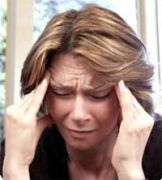Headache Expert Recommends Broad View of Diagnostic Criteria to Improve Accuracy of Headache Diagnosis
The clinical challenge of accurate headache diagnosis in the office can be overcome by taking a broad view of the various diagnostic categories of headache.

The apparent clinical challenge of accurate headache diagnosis in the office can largely be overcome by taking a broad view of the various diagnostic categories of headache, says migraine researcher Peter Goadsby, MD, of the University of California-San Francisco and King’s College London. His discussion led a migraine-focused afternoon scientific session on May 1, 2014 at the American Academy of Neurology’s 2014 annual meeting in Philadelphia, PA.
The challenge of headache diagnosis is closely linked to the challenge of wading through headache classifications, said Goadsby. Using broad strokes to group headaches into the two major classes of “migraine” and “not migraine,” he gave a brief history of headache classification, paying particular attention to the refinement of migraine diagnosis. He noted that individuals who have what he termed a “migrainous biology” will tend to have more frequent headaches overall; on a population level, this means that more headaches are migrainous than not.
Then, turning to the current headache classification scheme outlined in the International Classification of Headache Disorders (ICHD), Goadsby began with the challenge of differentiating tension-type headaches from migraines. Referring again to the premise that most headaches are migrainous, he pointed out that the patient who has no nausea, photophobia, or phonophobia with headaches is rare. In the simplest terms, frequent headache sufferers can be grouped into those who suffer headache along with other symptoms, and those who only experience headache. Only the latter group can be considered for a diagnosis of tension-type headache.
Citing a study in which headache sufferers in a primary care setting kept headache diaries, Goadsby noted that 76% of respondents reported symptoms consistent with a migraine diagnosis, and another 18% reported headaches with migrainous features. In this study, then, only 6% of headache patients were not migraine sufferers.
Another major group of headache disorders are the trigeminal autonomic cephalalgias. All involve pain from the afferent pathways of the fifth cranial nerve; most also involve some autonomic dysfunction associated with this nerve as well. Some symptom overlap exists, but an accurate diagnosis can be reached with careful questioning to yield an accurate history. A trial of medication specific for a particular class of headache can also be a useful diagnostic tool. The three major categories of the trigeminal cephalalgias are cluster headache, paroxysmal hemicrania, and Short-lasting Unilateral Neuralgiform headache with Conjunctival injection and Tearing (SUNCT)/Short-lasting Unilateral Neuralgiform headache attacks with cranial Autonomic symptoms (SUNA).
Cluster headaches are suffered more frequently by males than females, and may be triggered by alcohol consumption. Cluster headaches are nearly always unilateral, and occur in conjunction with unilateral lacrimation (90% of sufferers) and often conjunctival injection (60%); nasal congestion or eyelid edema may also occur. Occasionally, patients may have lateralized photo- and phonophobia with cluster headaches. These headaches often respond well to sumatriptan.
Paroxysmal hemicrania occurs more rarely, in just one in 100-200 headache sufferers in an equal gender distribution. When these headaches occur, they happen very frequently; 10 attacks per day, each lasting from two to 30 minutes would be a typical pattern for a paroxysmal hemicrania sufferer. Headache frequency can be cyclical, with some seasonal component. Autonomic symptoms and pain are again unilateral, but dysautonomia is relatively less common than in cluster headaches: lacrimation occurs in less than half of patients, and conjunctival injection in about one third of this group. Indomethacin is an effective treatment for the majority of sufferers of paroxysmal hemicrania, and continues to be effective over time. However, headaches will recur with cessation of indomethacin, and patients must also be given gastric prophylaxis. Given the symptom overlap between cluster headaches and paroxysmal hemicrania, Goadsby advises a trial of indomethacin in suspected cluster headache where not contraindicated.
The SUNCT/SUN headache types are much less common than other trigeminal autonomic cephalalgias, and affect women and men equally. These headaches are characterized by short-lasting (1-600 seconds), moderate to severe lateralized pain. The pain is stabbing, and tends to occur along the first division of the trigeminal nerve. Up to 80% of sufferers can experience cutaneous triggering of these headaches. For almost all SUNCT sufferers, there is no refractory period, so headaches can be re-triggered almost continuously. These headaches have no proven effective treatment or prophylaxis.